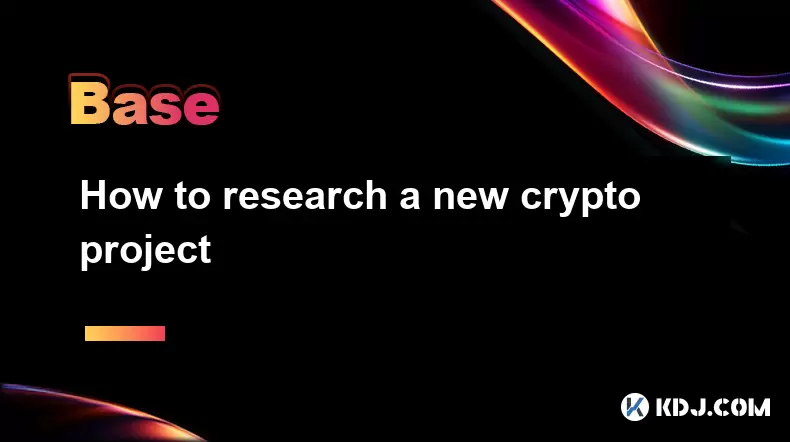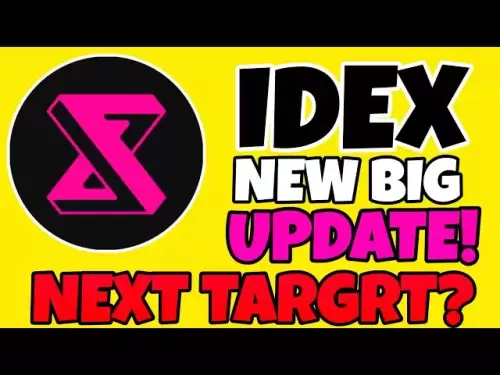-
 Bitcoin
Bitcoin $119,161.9671
1.52% -
 Ethereum
Ethereum $2,995.0722
2.34% -
 XRP
XRP $2.8555
5.32% -
 Tether USDt
Tether USDt $1.0002
0.00% -
 BNB
BNB $692.9308
1.48% -
 Solana
Solana $162.9611
1.87% -
 USDC
USDC $0.9999
0.00% -
 Dogecoin
Dogecoin $0.2014
2.84% -
 TRON
TRON $0.3032
0.90% -
 Cardano
Cardano $0.7464
6.51% -
 Hyperliquid
Hyperliquid $49.1533
5.71% -
 Stellar
Stellar $0.4773
24.77% -
 Sui
Sui $3.4979
3.93% -
 Chainlink
Chainlink $15.8552
6.01% -
 Hedera
Hedera $0.2401
23.85% -
 Bitcoin Cash
Bitcoin Cash $510.0474
0.97% -
 Avalanche
Avalanche $21.5550
4.82% -
 UNUS SED LEO
UNUS SED LEO $9.0389
-0.47% -
 Shiba Inu
Shiba Inu $0.0...01340
2.27% -
 Toncoin
Toncoin $2.9910
0.62% -
 Litecoin
Litecoin $96.4406
4.34% -
 Polkadot
Polkadot $4.0359
4.59% -
 Monero
Monero $338.4759
2.80% -
 Uniswap
Uniswap $8.6460
4.01% -
 Dai
Dai $0.9999
0.00% -
 Ethena USDe
Ethena USDe $1.0007
0.03% -
 Pepe
Pepe $0.0...01254
3.26% -
 Bitget Token
Bitget Token $4.3969
0.79% -
 Aave
Aave $312.2641
3.98% -
 Bittensor
Bittensor $397.0731
4.17%
How to research a new crypto project
Before investing, thoroughly research a crypto project’s fundamentals, team credibility, technology, tokenomics, community engagement, and real-world adoption to make informed decisions.
Jul 12, 2025 at 07:28 am

Understanding the Fundamentals of a New Crypto Project
Before diving into technical analysis or community sentiment, it is crucial to understand the fundamental purpose of the project. Ask yourself: What problem does this cryptocurrency aim to solve? Is there a real-world application or use case that makes this project unique? These are essential questions to consider when evaluating any new crypto initiative.
The whitepaper is typically the first document you should review. It should clearly outline the project's goals, the technology behind it, and how it intends to achieve its objectives. Pay attention to whether the whitepaper provides a clear roadmap with achievable milestones, or if it seems vague or overly ambitious without supporting details.
Another key aspect is the team behind the project. Look for information about their experience, past projects, and credibility within the blockchain space. A project with anonymous developers or no verifiable background may raise red flags.
Analyzing the Technology and Blockchain Infrastructure
Once you've grasped the basic premise of the project, the next step involves examining the underlying blockchain technology. Does the project use an existing blockchain like Ethereum, or has it developed its own? If it’s a custom blockchain, investigate the consensus mechanism—whether it’s Proof of Work (PoW), Proof of Stake (PoS), or another variation.
You should also look into the scalability and security features of the network. Are there third-party audits available for smart contracts or the core protocol? Transparency in code and regular security assessments are strong indicators of a trustworthy project.
Additionally, check whether the project is open-source or closed-source. Open-source projects allow the public to review and verify the code, which adds a layer of trust and accountability. You can usually find repositories on platforms like GitHub where contributors regularly update and improve the codebase.
Evaluating Tokenomics and Economic Model
Tokenomics refers to the economic structure of a cryptocurrency, including supply distribution, inflation rates, staking rewards, and utility within the ecosystem. Understanding these factors helps determine the long-term viability and potential value of the token.
Check if the total supply is capped or uncapped. Capped supplies often create scarcity, which can drive up value over time. However, some projects maintain a flexible supply to accommodate growth or governance changes. Also, pay close attention to how tokens are distributed—are they fairly launched, or is there a large pre-mine allocation for founders and early investors?
Look at the token’s utility. Can it be used for governance, staking, transaction fees, or accessing platform-specific services? Projects with strong utility models tend to have more sustainable ecosystems compared to those with speculative token structures.
Assessing Community Engagement and Social Presence
A thriving community is a good sign that a project is gaining traction. Examine the project’s presence on social media platforms like Twitter, Telegram, Discord, and Reddit. Active discussions, frequent updates, and transparent communication from the development team are positive indicators.
Pay attention to the tone of the community. Are users asking critical questions, or is there a tendency to dismiss concerns? Be cautious of overly promotional environments where dissenting opinions are silenced or banned quickly.
Also, look into how the team handles criticism and feedback. Do they engage constructively, or do they ignore negative comments? A healthy community dynamic reflects a mature and responsive development team.
Reviewing Partnerships, Roadmap, and Real-World Adoption
Partnerships with reputable companies or organizations can significantly boost a project’s legitimacy. Investigate whether the project has established collaborations with known entities in the blockchain or traditional industries.
Examine the project’s roadmap closely. Has it met previous milestones on time, or has it consistently missed deadlines? Delays aren't always a red flag, but a lack of communication or transparency around them can be concerning.
Real-world adoption is another important factor. Is the project being used by actual users or businesses? Check for active dApp usage, wallet integrations, exchange listings, or merchant adoption. Projects with tangible usage beyond speculation are more likely to succeed in the long run.
Frequently Asked Questions
Q: How can I verify if a crypto project's team is legitimate?
A: Start by reviewing official websites and LinkedIn profiles of the team members. Look for prior work history, especially in blockchain-related fields. Cross-check their involvement in other projects and see if they actively participate in community discussions and interviews.
Q: Why is checking audit reports important before investing in a crypto project?
A: Audit reports help identify vulnerabilities in the project's smart contracts or protocols. Reputable auditing firms like CertiK or PeckShield provide independent evaluations that can highlight potential risks, making them essential for assessing the security of a project.
Q: How do I know if a crypto project has a strong use case?
A: Evaluate whether the project addresses a specific issue in a particular industry and whether its solution offers significant advantages over existing alternatives. Strong use cases are usually backed by real-world applications, pilot programs, or partnerships indicating practical implementation.
Q: Should I rely solely on whitepapers when researching a crypto project?
A: No, whitepapers should be just one part of your research. Combine them with technical reviews, community sentiment analysis, team verification, and third-party audits to form a well-rounded understanding of the project’s legitimacy and potential.
Disclaimer:info@kdj.com
The information provided is not trading advice. kdj.com does not assume any responsibility for any investments made based on the information provided in this article. Cryptocurrencies are highly volatile and it is highly recommended that you invest with caution after thorough research!
If you believe that the content used on this website infringes your copyright, please contact us immediately (info@kdj.com) and we will delete it promptly.
- BlockDAG's BEAT Vesting Pass: Dominating Crypto While HBAR Shows Strength
- 2025-07-14 04:30:12
- Crypto's Underdogs: Stellar (XLM), Dogecoin (DOGE), and the Hunt for the Next Big Thing
- 2025-07-14 04:50:12
- RUVI Token: AI Auditing and Low Price Position It for 100x Gains
- 2025-07-14 04:50:12
- Efinity's Epic Surge: Altcoin Daily Gains and What It Means for You
- 2025-07-14 04:35:12
- Bitcoin Price Surges Amid Crypto Week and Global Market Shifts
- 2025-07-14 05:10:11
- BlockDAG, BONK, XRP: What's Hot and What's Not in the Crypto World
- 2025-07-14 03:30:16
Related knowledge

What is the Bitcoin dominance index
Jul 12,2025 at 10:35pm
Understanding the Bitcoin Dominance IndexThe Bitcoin Dominance Index, often abbreviated as BTC.D, is a metric used to measure Bitcoin's market capital...

What is the Bitcoin dominance index
Jul 11,2025 at 04:29am
What is the Bitcoin Dominance Index?The Bitcoin Dominance Index is a metric used to gauge Bitcoin's market capitalization relative to the total market...

Can crypto be a hedge against inflation
Jul 14,2025 at 12:21am
Understanding the Concept of Hedging Against InflationInflation refers to the general increase in prices and fall in the purchasing value of money ove...

Can crypto be a hedge against inflation
Jul 12,2025 at 12:07pm
Understanding the Role of Blockchain in Decentralized Finance (DeFi)Blockchain technology serves as the backbone of decentralized finance, offering a ...

What are account abstraction wallets
Jul 13,2025 at 01:43am
Understanding the Concept of Account AbstractionAccount abstraction is a term frequently used in the Ethereum ecosystem, particularly within discussio...

What does "gas limit" vs "gas price" mean
Jul 13,2025 at 04:00am
Understanding the Basics of Gas in Blockchain TransactionsIn the Ethereum and other EVM-compatible blockchains, every transaction requires computation...

What is the Bitcoin dominance index
Jul 12,2025 at 10:35pm
Understanding the Bitcoin Dominance IndexThe Bitcoin Dominance Index, often abbreviated as BTC.D, is a metric used to measure Bitcoin's market capital...

What is the Bitcoin dominance index
Jul 11,2025 at 04:29am
What is the Bitcoin Dominance Index?The Bitcoin Dominance Index is a metric used to gauge Bitcoin's market capitalization relative to the total market...

Can crypto be a hedge against inflation
Jul 14,2025 at 12:21am
Understanding the Concept of Hedging Against InflationInflation refers to the general increase in prices and fall in the purchasing value of money ove...

Can crypto be a hedge against inflation
Jul 12,2025 at 12:07pm
Understanding the Role of Blockchain in Decentralized Finance (DeFi)Blockchain technology serves as the backbone of decentralized finance, offering a ...

What are account abstraction wallets
Jul 13,2025 at 01:43am
Understanding the Concept of Account AbstractionAccount abstraction is a term frequently used in the Ethereum ecosystem, particularly within discussio...

What does "gas limit" vs "gas price" mean
Jul 13,2025 at 04:00am
Understanding the Basics of Gas in Blockchain TransactionsIn the Ethereum and other EVM-compatible blockchains, every transaction requires computation...
See all articles
























































































